How to Fix a Dripping Tap in Your Gold Bathroom UK: A Comprehensive DIY Guide
Table Of Contents:
-
Introduction
→ -
Bathroom Taps Collection
→ -
Common Causes of a Dripping Tap
→ -
How to Identify the Source of the Drip
→ -
Tools and Materials Needed
→ -
Step-by-Step Instructions for Fixing a Dripping Tap
→ -
Choosing the Right Replacement for Gold Taps
→ -
How to Handle a Dripping Tap Without Damaging the Finish
→ -
Water Pressure Considerations
→ -
When to Call a Professional for Your Dripping Tap
→ -
Cost of Fixing a Dripping Tap vs. Replacing the Tap
→ -
Preventing Future Drips and Leaks in Your Taps
→ -
Conclusion
→ -
Frequently Asked Questions
→
Introduction
A dripping tap may seem like a small issue at first, but over time, it can lead to significant frustrations—both in terms of the constant noise and the wastage of water. More importantly, a seemingly innocent drip can begin to tarnish the finish of your taps, especially if you have the added luxury of gold bathroom taps. Gold fixtures in your bathroom add an undeniable touch of elegance and sophistication, transforming your space into a retreat. However, with their stunning appearance comes the need for extra care and attention to keep them looking pristine and functioning perfectly.
Gold bathroom taps require particular sensitivity when it comes to maintenance, as even a minor mistake in handling or improper repair methods can cause lasting damage to their delicate gold plating or finish. The last thing you want is a costly repair or, worse, the need to replace the entire tap due to mishandling.
Fortunately, repairing a dripping tap doesn’t have to be a daunting task. With the right knowledge, tools, and a bit of patience, you can resolve the issue yourself without needing to call a plumber. This guide will provide you with everything you need to know to fix that dripping tap in your gold bathroom, while also ensuring you don’t inadvertently damage the luxurious gold finish. We’ll cover the common causes of a dripping tap, how to identify where the leak is coming from, what tools and parts you’ll need, and a comprehensive step-by-step approach to fixing the issue. Plus, we’ll share tips on selecting the right replacement parts, how to preserve your taps' gold finish during the process, and when it might be best to call in a professional.
Whether you're a seasoned DIY enthusiast or a first-timer trying to save on repair costs, this guide will ensure that your gold taps remain functional and beautiful for years to come, free from the annoyance of leaks.
Common Causes of a Dripping Tap
A dripping tap is often a result of various underlying issues, many of which are relatively simple to fix once identified. Understanding the common causes of a dripping tap can help you troubleshoot the problem more effectively and guide you toward the right solution. Here are some of the most frequent reasons why taps—especially gold bathroom taps—can begin to drip:

1. Worn-Out Washer or O-Ring
One of the most common reasons for a dripping tap is a worn-out washer or O-ring. Washers are small rubber or silicone components that sit at the base of the tap valve and are responsible for creating a seal when the tap is turned off. Over time, the constant pressure and friction can cause the washer or O-ring to wear down, crack, or become misshapen, leading to an ineffective seal and causing the tap to drip.
-
Impact on Gold Taps: Worn washers can cause water to leak around the tap handle, or even at the base of the tap. With gold taps, worn washers may also lead to corrosion or tarnishing if the leak is not addressed promptly.
2. Corroded Valve Seat
The valve seat is an essential part of your tap, as it connects the tap to the spout and controls water flow. When the valve seat becomes corroded due to mineral deposits (often caused by hard water), it can prevent the tap from sealing properly. A corroded valve seat can cause water to leak from the spout or base of the tap, resulting in a constant drip.
-
Impact on Gold Taps: Corrosion on the valve seat can damage the tap's internal components, and if the water continues to leak, it can potentially harm the gold finish around the tap.
3. Faulty or Worn Cartridge (for Mixer Taps)
If you have a mixer tap (one where both hot and cold water are combined), the cartridge plays a crucial role in regulating water flow and temperature. Over time, the cartridge can wear out, become clogged, or become damaged, leading to water leakage. A faulty cartridge may allow water to continue flowing through the tap, even when the handle is in the off position, causing a drip.
-
Impact on Gold Taps: A faulty cartridge in a gold mixer tap can be especially problematic because it can lead to continuous drips that are harder to detect. If not addressed quickly, the water can damage the gold finish by causing discoloration or rusting underneath the surface.
4. Loose or Damaged Parts
Sometimes, the issue causing the drip is simply a loose or damaged part of the tap. Whether it's a loose screw, a broken valve, or a damaged connection, any part of the tap that isn’t tightly secured can result in water leaking from the tap. This can often be the case in older taps that have been used for many years or have been subjected to rough handling.
-
Impact on Gold Taps: Gold taps, particularly those with intricate designs or delicate finishes, can suffer significant cosmetic damage if parts are left loose or damaged. Over time, water leakage may even seep into the underlying metal and cause corrosion or tarnishing.
5. High Water Pressure
While high water pressure is typically not the cause of a dripping tap in itself, it can exacerbate the issue. Excessive water pressure can put additional strain on the tap's components, causing washers, O-rings, and other internal parts to wear out more quickly. In some cases, high water pressure can even force water through seals that would otherwise remain intact, leading to leaks and drips.
-
Impact on Gold Taps: High water pressure can cause not just leaks, but can also strain the gold coating and cause wear on areas that are exposed to constant pressure, leading to premature fading or damage.
6. Faulty Tap Handle Seal
In some taps, the tap handle itself is sealed with a rubber gasket or seal to ensure that water doesn’t leak through when the tap is turned off. If this seal becomes damaged or worn over time, water can slowly drip from the base of the handle, resulting in a constant leak. This is particularly common with older taps or those that have been exposed to significant use.
-
Impact on Gold Taps: Water leaking from around the tap handle can cause staining, tarnishing, or fading of the gold finish if not addressed quickly. The drip may not be immediately noticeable, but over time, the damage can accumulate.
In summary, there are several potential causes for a dripping tap, and many of them are related to natural wear and tear of the tap's components. Whether it’s a worn-out washer, corroded valve seat, faulty cartridge, or loose part, addressing the issue promptly can help prevent further damage to the tap and the surrounding finish. For gold taps, extra care is needed to preserve the finish and prevent corrosion, tarnishing, or staining that can result from leaks. Understanding the cause of the drip is the first step toward resolving the issue effectively and keeping your taps in top condition.
How to Identify the Source of the Drip
Before you can fix a dripping tap, it's crucial to pinpoint the exact source of the leak. Identifying where the water is coming from will allow you to focus your efforts on the specific part of the tap that needs attention. Here's a step-by-step guide on how to identify the source of a drip in your gold bathroom tap:

1. Turn Off the Water Supply
The first and most important step before you begin inspecting your tap is to turn off the water supply. Most taps will have a shut-off valve beneath the sink. Turn these valves clockwise to stop the water flow. If you can’t find the valves, you may need to turn off the main water supply to your house.
Tip: Before proceeding, plug the drain with a cloth or drain plug to prevent any small parts from falling down the drain.
2. Inspect the Tap Mechanism
Once the water supply is off, take a close look at the tap to see where the drip is originating. Pay attention to these key areas:
-
Spout (where water flows out): If water is dripping from the spout, the issue could be with the valve seat, cartridge (in a mixer tap), or washer.
-
Handle area: If the water is dripping from around the handle, it might indicate a problem with the tap handle seal or O-ring.
-
Base of the Tap: If the drip is occurring near the base of the tap, it may be a result of a loose nut, damaged O-ring, or corrosion around the valve.
Tip: Sometimes, the drip is not visible immediately. It may be helpful to use a tissue or cloth to wipe the area dry and observe where the water starts to seep out.
3. Look for Signs of Damage or Wear
After visually inspecting the tap, check for any visible signs of wear and tear on the key components:
-
Washer/O-Ring: If you can access the internal parts of the tap, check the rubber washers and O-rings. Look for cracks, signs of fraying, or any discoloration.
-
Cartridge (for Mixer Taps): In mixer taps, the cartridge controls both the temperature and the water flow. If your mixer tap is dripping, the issue could be a faulty or worn-out cartridge. It may appear worn or damaged, or you may hear strange noises when the water is turned on or off.
-
Valve Seat: If you notice that the tap is leaking from the spout and the valve is exposed, corrosion or mineral build-up around the valve seat could be to blame.
4. Check the Water Pressure
Excessively high water pressure can strain the tap’s internal components, causing parts to wear out more quickly and lead to a drip. To check for high water pressure:
-
Turn on the Tap: With the water supply turned back on, open the tap fully and observe the flow of water. If the flow seems very forceful or is making unusual sounds, the water pressure could be too high.
-
Use a Pressure Gauge: If you have a pressure gauge, you can measure the water pressure directly. The ideal water pressure for most taps is between 1 to 3 bar. Anything higher can cause stress on your tap components.
5. Look for Leaks at Specific Areas
A good way to narrow down the source of the drip is by carefully inspecting the tap while it is running:
-
Dripping from the Spout: If water is dripping from the spout, the issue is most likely with the valve seat or cartridge. In this case, you may need to clean or replace the valve seat or cartridge, depending on your tap type.
-
Dripping from Around the Handle: If water is dripping from around the base of the handle, this is often a sign of a worn-out O-ring or damaged tap handle seal. This is especially common in older taps that have been used heavily over time.
-
Dripping from the Base: A drip originating from the base of the tap could indicate a loose nut or connection. Tightening or replacing the nuts and seals may resolve the issue.
6. Listen for Unusual Noises
If your tap is still leaking after you’ve turned it off, listen closely for any unusual sounds. If you hear gurgling or whistling noises, it could be a sign that the cartridge or valve seat is malfunctioning or clogged with mineral deposits. Sometimes, a faulty cartridge can also cause water to continue flowing even after the handle is turned off, leading to a constant drip.
7. Check the Tap Handle
Some taps may have a handle that’s improperly sealed or loose. If water is dripping from around the handle area, it could be a sign of:
-
A loose screw that holds the handle in place.
-
A damaged seal underneath the handle, which can prevent the tap from fully shutting off.
Tighten any loose screws and check for any damaged seals. In some cases, a simple re-tightening or replacement of the seal can resolve the problem.
8. Test Different Positions
For a more comprehensive check, operate the tap at different positions. Try turning the tap on and off slowly while observing the drip. This can help you determine whether the issue lies in the handle, the cartridge, or a worn part inside.
Identifying the source of a dripping tap in your gold bathroom can be a straightforward process once you’ve methodically checked the key areas. Look for signs of wear on washers, O-rings, or cartridges, and test the water pressure if needed. By carefully following these steps, you can narrow down the problem and ensure that you focus on replacing the right parts, ultimately fixing the drip and preserving the beauty of your gold tap.
Tools and Materials Needed

Here’s what you’ll need to fix the drip:
-
Adjustable Wrench or Spanner
-
Screwdriver (usually flathead or Phillips depending on your tap)
-
Replacement Washers, O-Rings, or Cartridge
-
Plumber’s Tape (Teflon tape for a better seal)
-
Small Brush (for cleaning any debris or mineral deposits)
-
Silicone Grease (optional, for lubricating seals)
-
Bucket or Towel (to catch any drips or water)
Step-by-Step Instructions for Fixing a Dripping Tap
Now that you've identified the source of the drip, it's time to tackle the repair. Fixing a dripping tap in your gold bathroom can be a straightforward DIY task if you follow the right steps and take care not to damage your delicate gold finish. Here’s a step-by-step guide to help you get your tap back in working order without compromising the appearance of your beautiful fixtures.
1. Turn Off the Water Supply
Before you begin any work on the tap, ensure the water supply is completely shut off.
-
Locate the shut-off valves: These are typically located under the sink, near the pipes. Turn them clockwise to close them and stop the flow of water.
-
If no shut-off valve is available: Turn off the main water supply to your home to prevent any accidents during the repair process.
Tip: Once the water is off, open the tap to release any remaining water in the pipes. This will prevent water from spilling when you take apart the tap.
2. Plug the Drain
To avoid losing small parts down the drain, plug it with a sink plug or a cloth. This will prevent any screws, washers, or other components from falling into the drain while you work.
3. Remove the Tap Handle
Next, you’ll need to remove the handle of the tap to gain access to the internal parts. Here’s how:
-
Locate the screw: Most taps have a screw that holds the handle in place. This screw is usually located under a decorative cap at the top of the handle. Pry off the cap gently with a flathead screwdriver if it’s present.
-
Unscrew the handle: Use a screwdriver to remove the screw that holds the handle in place. Once the screw is removed, lift the handle off the tap.
4. Remove the Top Mechanism (Valve Stem or Cartridge)
Once the handle is removed, you should have access to the tap’s internal mechanism, which controls water flow. Depending on the type of tap, you may have to remove a valve stem (compression taps) or a cartridge (mixer taps):
-
Compression taps: If your tap has separate hot and cold controls, you will likely be dealing with a valve stem. Use an adjustable wrench to carefully unscrew the valve stem from the tap body.
-
Mixer taps: For mixer taps, you'll need to remove the cartridge that controls both the hot and cold water flow. Use your wrench to loosen and remove the cartridge.
Tip: Keep track of how parts are assembled. This will help you during reassembly.
5. Inspect the Internal Parts
With the valve stem or cartridge removed, inspect the internal components for any damage or wear. The most common issues to look out for are:
-
Worn-out washers or O-rings: Check for cracks, tears, or flatness in the rubber washers or O-rings. If any are damaged, they’ll need to be replaced.
-
Damaged cartridge: If you’re dealing with a mixer tap and the cartridge looks worn, it’s best to replace it entirely.
-
Corroded valve seat: If you notice any corrosion or mineral buildup on the valve seat, you’ll need to clean it thoroughly. You may also need to replace it if the corrosion is too severe.
6. Clean the Parts (if Necessary)
Before proceeding with the installation of new parts, clean any parts that may have mineral deposits or debris, especially around the valve seat. Here's how to clean the components:
-
Use a small brush: A toothbrush or small cleaning brush is perfect for removing any dirt or limescale from the valve seat or other internal parts.
-
Vinegar solution: If mineral deposits are present, soak the affected parts in a mixture of equal parts water and vinegar. Let them soak for 15–30 minutes, then scrub gently to remove the buildup.
Tip: Be very gentle when cleaning the gold tap parts to avoid scratching the finish.
7. Replace Damaged Parts
If you identified any worn or damaged parts, it’s time to replace them. Here’s what to do:
-
Replace the washers or O-rings: Use the same size and type of washers or O-rings as the ones you removed. Ensure they fit snugly around the valve stem or cartridge.
-
Replace the cartridge (for mixer taps): If the cartridge is damaged, take it to your local hardware store to find an exact replacement. Make sure you purchase a compatible cartridge for your tap model.
-
Install a new valve seat (if corroded): If the valve seat is corroded beyond repair, you’ll need to replace it. Make sure to get a compatible replacement from your hardware store.
Tip: When replacing the washers or seals, apply a small amount of silicone grease to help ensure a smooth, watertight seal.
8. Reassemble the Tap
Once all damaged parts are replaced and cleaned, it’s time to reassemble the tap. Follow these steps:
-
Insert the new cartridge or valve stem: Place the new parts back into the tap body. Make sure they fit securely in place.
-
Reattach the handle: Once the internal components are in place, put the handle back on and secure it with the screw you removed earlier.
9. Turn On the Water Supply
After everything is securely reassembled, it’s time to turn the water supply back on:
-
Slowly open the shut-off valves: Turn the water supply back on slowly to avoid sudden water pressure spikes.
-
Test the tap: Turn the tap on and off a few times to check for leaks. Ensure that the drip has stopped and that the tap is working properly. If there’s still a drip, check the internal parts again to ensure everything is correctly aligned.
10. Check for Leaks
After testing the tap, carefully inspect the handle, base, and spout for any signs of leakage. If you notice any leaks, you may need to tighten a nut or reseat the cartridge or valve stem. A small adjustment might be all that’s needed to stop the drip completely.
11. Clean and Protect the Gold Finish
Once you’re sure the tap is no longer leaking, it’s important to clean and protect the gold finish:
-
Clean the tap: Use a soft cloth to gently wipe down the tap, removing any fingerprints, water spots, or residue from the repair process.
-
Polish the gold: Use a gold-friendly polish to restore the shine and protect the finish. Be sure to use a non-abrasive cleaner to avoid damaging the gold surface.
Fixing a dripping tap in your gold bathroom is entirely manageable with the right tools, a bit of patience, and a careful approach. By following these steps, you can not only stop the drip but also ensure that your luxurious gold tap remains in top condition, free from damage. With routine maintenance and timely repairs, you can extend the life of your fixtures and enjoy a beautifully functional bathroom.
Choosing the Right Replacement for Gold Taps
Gold taps are a statement of luxury and elegance in any bathroom. Their shimmering, opulent finish can elevate the look of your entire space, but maintaining their appearance and functionality requires careful consideration when it’s time for replacements. Whether you're replacing a single part, like a washer or cartridge, or looking to replace the entire tap, choosing the right replacement for your gold taps ensures that they continue to shine and perform without compromising their beautiful finish. Here’s a comprehensive guide to help you select the right replacement for your gold taps.

1. Identify the Type of Tap
Before choosing a replacement, it’s crucial to understand what kind of tap you have, as this will determine the parts you need. There are various types of taps, each with different components that may require specific replacements:
-
Compression Taps: Often found in older bathrooms, compression taps use a washer to create a seal when you turn the handle to shut off the water. Commonly, these taps have separate hot and cold controls.
-
Cartridge Taps: Common in modern bathrooms, these taps use a cartridge to regulate the flow and temperature of water. They are frequently found in mixer taps.
-
Ceramic Disk Taps: These taps use two ceramic discs that slide against each other to control the water flow. They are durable and less prone to wear but might still require occasional repairs.
-
Ball Taps: Found in some advanced and specialized tap systems, these taps use a ball mechanism to control water flow and temperature.
Knowing the type of tap you have will help you identify which parts are compatible when choosing replacements.
2. Match the Gold Finish
Gold taps come in different finishes, from polished gold to brushed gold, and it’s essential to match the replacement parts to maintain the tap's uniform look. Since gold taps are often delicate, mismatched parts can not only disrupt the visual appeal but also affect the finish’s longevity.
-
Polished Gold: If your gold tap has a shiny, reflective finish, be sure to select polished gold components that will maintain the same level of gloss and shine.
-
Brushed Gold: A brushed gold finish has a matte, textured appearance. For such taps, you’ll need brushed or satin gold parts to avoid noticeable differences in texture and appearance.
-
Matte Gold: A matte gold finish looks soft and subtle. It’s crucial to find parts that have a similar matte coating to match the finish.
If replacement parts with the same finish are hard to find, it may be worth reaching out to a specialized supplier who can offer matching finishes or gold plating services.
3. Ensure Compatibility with Tap Components
When replacing parts, it’s essential that the new components are compatible with your existing tap. This includes everything from valve stems and cartridges to washers and seals. Choosing the right replacement will ensure that your tap functions correctly without leaks, and the replacement is easy to install. Here's how to ensure compatibility:
-
Measure Key Components: Measure the size of washers, valve stems, or cartridges before purchasing. This is particularly important if you're replacing internal parts like cartridges, as slight differences in size can affect performance.
-
Consult the Manufacturer: If possible, check with the tap’s manufacturer for recommended replacements or part numbers. This is especially crucial for high-end or custom-designed taps.
-
Consider the Configuration: If your tap has separate hot and cold controls, you’ll need parts that are designed for that configuration. For mixer taps, make sure that the cartridge or valve is compatible with both hot and cold water inputs.
4. Choose High-Quality, Durable Materials
Gold taps are exposed to constant water flow and daily use, so it’s important to choose durable, long-lasting replacement parts. Selecting high-quality materials will ensure the longevity of both the tap and its new components. Here’s a breakdown of materials to look for in replacement parts:
-
Brass and Stainless Steel: For critical parts such as valve stems, cartridges, and spouts, opt for brass or stainless steel replacements. These materials are corrosion-resistant, durable, and will withstand constant water pressure.
-
Rubber or Silicone Washers: The washers that help seal the tap should be made from rubber or silicone to provide a watertight seal. These materials are more flexible and resistant to wear than plastic alternatives, ensuring a longer lifespan.
-
Ceramic Discs: If you're replacing a cartridge or ceramic disc (common in ceramic disk taps), make sure the replacement is made from high-quality ceramic. Ceramic discs are smooth and offer long-term reliability without degrading quickly.
Choosing high-quality materials ensures that your replacement parts will perform well without degrading the tap’s finish.
5. Consider Water Pressure and Flow Requirements
When replacing parts, especially cartridges or valves, it’s essential to consider the water pressure and flow requirements of your tap system. High water pressure can cause leaks or excessive wear on tap components, while low water pressure may affect the tap’s performance. Here are some things to consider:
-
Pressure-Regulated Cartridges: If your water pressure is high, look for replacement cartridges that are designed to handle high-pressure systems without leaking or breaking down.
-
Flow Restrictors: Some newer taps come with flow restrictors built into the cartridges to conserve water. If your tap has a flow restrictor, consider replacing it with a similar one to maintain water-saving benefits.
-
Pressure Balancing: For mixer taps, ensure that the new cartridge has pressure-balancing technology if your tap uses this feature. This balances the hot and cold water to prevent sudden changes in temperature.
6. Avoid Low-Quality, Generic Replacements
While it may be tempting to opt for cheaper, generic replacement parts, using low-quality components in your gold taps can lead to long-term issues. Generic parts may not fit well, could wear down quickly, and may not provide the same aesthetic quality as original components.
-
Original Parts: For the best results, choose original parts from the tap manufacturer. These parts are designed to fit perfectly and will ensure the longevity of both the functionality and appearance of your gold tap.
-
Specialized Parts Suppliers: If the original parts are no longer available, seek out a specialized supplier who can provide high-quality replacements that are designed to match your gold tap.
7. Think About Future Maintenance
When choosing replacement parts, consider the long-term ease of maintenance. Gold taps are designed to look beautiful, but maintaining their appearance requires regular care.
-
Easy-to-Clean Components: Opt for parts that are easy to clean and resistant to mineral buildup. This is particularly important for parts like cartridges and valve stems, which may accumulate limescale or grime.
-
Maintenance Kits: Some manufacturers offer maintenance kits with all the necessary components, including O-rings, washers, and seals, for easy and regular maintenance.
8. Professional Help vs. DIY
While replacing parts of a gold tap can be a DIY job for most people, if you’re unsure about compatibility or the right parts to choose, it might be worth consulting a professional plumber. A plumber will have the knowledge and expertise to select the appropriate replacements and install them correctly without damaging the gold finish.
Choosing the right replacement for your gold taps is essential not only for their functionality but also for maintaining their luxurious look. By carefully considering the type of tap, ensuring compatibility, selecting high-quality materials, and matching the gold finish, you’ll be able to keep your taps performing at their best and looking beautiful. With proper care and attention to detail, your gold taps will continue to shine as a stunning focal point in your bathroom for years to come.
How to Handle a Dripping Tap Without Damaging the Finish
To handle a dripping tap without damaging the finish, it’s essential to approach the repair process with care, especially when dealing with a luxurious gold tap. Start by ensuring the water supply is turned off to prevent any water leakage during the repair. Always use soft, non-abrasive tools, like microfiber cloths and rubber-coated wrenches, to avoid scratching or dulling the gold surface. Protect the surrounding area with a cloth to catch any small parts and prevent them from falling into the drain.
While working on the tap, handle the gold finish gently, avoiding excessive force or rough handling. When cleaning the tap, choose mild soap and water or a gold-friendly cleaner to preserve the finish. Never use abrasive materials that could scratch the surface. Additionally, when replacing parts, be careful not to over-tighten, as this can damage both the internal mechanisms and the gold exterior.
After making the repair, test the tap for any leaks and ensure the water flow is functioning correctly. Finally, to maintain the gold finish, clean and polish your tap regularly to keep it sparkling and free from tarnish. By following these practices, you can fix a dripping tap while keeping your gold fixture in pristine condition.
Water Pressure Considerations
Water pressure plays a significant role in the performance and longevity of your gold taps. Whether you’re dealing with a dripping tap or considering replacement parts, understanding the impact of water pressure is crucial, especially for high-end fixtures like gold taps. The right water pressure ensures that your taps perform efficiently and last longer, while improper pressure can cause a range of issues, from leaks to tarnishing of the finish. Here’s a deeper look into water pressure considerations for your gold taps:
High Water Pressure
Excessive water pressure, typically above 70 psi (pounds per square inch), can lead to several issues, especially with delicate fixtures like gold taps. Gold taps, often made with thin plating or a luxurious finish, can be particularly vulnerable to the effects of high-pressure water. Here’s how high water pressure can impact your gold taps:
-
Increased Wear on Internal Parts: Excessive water pressure can put unnecessary strain on internal components such as cartridges, washers, and valves. This can cause these parts to wear out much more quickly than they would under normal pressure conditions. Over time, you might experience more frequent leaks or need to replace parts more often.
-
Leaks and Drips: High water pressure can cause joints and seals within the tap to become stressed, which increases the risk of leaks. In some cases, the seals may even crack, leading to constant dripping. This is particularly problematic with gold taps, as persistent leaks can lead to water damage around the fixture and tarnishing of the gold finish.
-
Mineral Buildup and Tarnishing: Gold taps are susceptible to mineral deposits caused by high water pressure. The constant force of water can cause minerals like calcium and lime to accumulate more rapidly, which not only affects the tap’s performance but can also dull or tarnish the gold surface. This buildup can be difficult to clean off and may require more frequent maintenance.
-
Pressure Surges: If your water system experiences pressure surges, you may find that your gold tap handles poorly. A sudden surge in water pressure can cause water hammer (a thudding noise), potentially damaging the tap over time. Additionally, high-pressure surges can cause cracks in the internal components, leading to more severe issues.
How to Address High Water Pressure:
If you suspect that your water pressure is too high, consider installing a pressure-reducing valve (PRV). These valves regulate the pressure coming into your home and can help maintain it within an optimal range. A PRV can be installed at the point where the water enters your house, and it helps keep the water pressure between 40-60 psi, which is ideal for most plumbing systems.
Low Water Pressure
Low water pressure can be just as problematic as high water pressure. Water pressure that’s too low can affect the performance of your gold taps, making them difficult to use and causing frustration. Here’s how low water pressure can impact your tap’s performance:
-
Weak Water Flow: One of the most common signs of low water pressure is weak or uneven water flow. If you find that your gold taps are producing a very slow or inconsistent stream of water, it could be a result of low water pressure. This can be frustrating when you’re trying to fill a sink or take a shower, as the flow simply won’t be powerful enough.
-
Poor Temperature Control: With mixer taps, low water pressure can make it difficult to regulate the temperature of the water properly. If the pressure from the hot and cold water lines is uneven, it can result in poor mixing of the two, causing temperature fluctuations and making it difficult to maintain a comfortable temperature.
-
Inefficiency in Use: Low water pressure means it takes longer to complete everyday tasks like washing your hands, filling a basin, or cleaning dishes. This inefficiency can make your bathroom or kitchen feel less functional and less enjoyable to use.
-
Potential Blockages: In some cases, low water pressure may indicate a blockage in the tap or plumbing. Over time, mineral deposits from hard water can clog the aerator or showerhead, restricting the water flow. This issue can be particularly problematic for gold taps, as the buildup can cause damage to the tap’s delicate finish and may even result in rusting or tarnishing.
How to Address Low Water Pressure:
If you're dealing with low water pressure, start by checking for any blockages. Remove the aerator (the small mesh screen at the tip of the tap) and clean it with vinegar to remove mineral deposits. If this doesn’t solve the problem, you may need to check the rest of the plumbing for issues such as leaks, pipe clogs, or faulty pressure regulators.
In some cases, a booster pump might be necessary to improve water flow, especially in homes with older or poorly-maintained plumbing systems.
Balancing Water Pressure
For the best performance of your gold taps, it’s essential to maintain a balanced water pressure system. Pressure that’s too high or too low can cause inefficiency, wear on the components, and even damage to the aesthetic finish. Most modern plumbing systems are designed to work efficiently within a water pressure range of 40 to 60 psi.
-
Pressure Monitoring: If you’re unsure about your water pressure, you can purchase a pressure gauge to monitor it. These gauges can be attached to your outdoor tap or the pipe that supplies your tap to measure the pressure accurately. If it’s outside the optimal range, consider installing a pressure regulator to bring it into the ideal range.
-
Regulating Flow: For taps with flow restrictors, ensure they are working correctly. These restrictors limit the amount of water that flows through the tap, helping to conserve water while also reducing the impact of high water pressure.
Proper water pressure is essential for maintaining the performance and appearance of your gold taps. Too high or too low a pressure can cause leaks, mineral buildup, and even premature wear on the internal components. The key is to balance the pressure, ideally between 40-60 psi, and to install devices such as pressure regulators or boosters to ensure smooth operation. By addressing water pressure issues, you’ll prolong the life of your gold taps and keep them looking and functioning beautifully for years to come.
When to Call a Professional for Your Dripping Tap
While many common tap repairs can be handled as DIY projects, there are times when it’s best to call a professional plumber, especially when dealing with delicate fixtures like gold taps. Here are some key scenarios where enlisting the help of a professional is the smartest choice:

1. Persistent Leaks Despite Repair Attempts
If you've attempted to fix the dripping tap yourself and the leak persists, it's time to call a professional. A stubborn drip can indicate that the underlying problem is more complex than a simple washer or O-ring replacement. Professionals have the expertise to identify the root cause of the leak, whether it’s an issue with the valve seat, internal parts, or water pressure, and can fix it properly.
2. Damage to the Gold Finish
Gold taps require special care to avoid damaging their luxurious finish. If you’re worried about scratching, tarnishing, or otherwise damaging the gold during the repair, a professional plumber with experience handling high-end fixtures will ensure the tap is repaired without harming its appearance. Additionally, if there is any tarnishing or discoloration of the gold, a professional can help restore the finish safely.
3. Complex Internal Issues
Sometimes, the issue with your tap is deeper than just a worn-out part like a cartridge or washer. If you’re dealing with corroded internal components, broken valve seats, or serious water flow issues, it's best to leave it to an expert. These problems require advanced tools and expertise to fix, and attempting to repair them without professional knowledge could lead to further damage.
4. Incorrect Water Pressure
If your tap is leaking due to high or low water pressure, adjusting the pressure correctly is a delicate process. Incorrectly managing water pressure can cause additional problems or damage. A plumber will be able to assess the pressure and, if necessary, install a pressure regulator to keep it within optimal levels.
5. No Experience with Gold Fixtures
If you're unfamiliar with working on gold fixtures and you're worried about damaging them, it’s safer to call in a professional. Gold taps can be sensitive, and an improper repair could lead to permanent damage. Professionals have the right tools, experience, and know-how to handle these delicate fixtures properly.
6. The Tap Is Old or Outdated
Older taps or those with discontinued parts might be difficult to repair. If your gold tap is quite old and parts are hard to find, a plumber will be able to source compatible replacement parts or recommend alternatives. They can also advise you on whether it’s more cost-effective to repair the existing tap or replace it with a new one.
7. You’re Not Sure What’s Causing the Problem
If you’re unsure about what’s causing the drip—whether it’s a worn-out seal, damaged cartridge, or an issue with water pressure—a plumber can conduct a thorough inspection to determine the exact cause. Sometimes, the problem isn’t immediately obvious, and having a professional take a look will save you time and frustration.
8. You Lack the Right Tools or Skills
Some tap repairs require specialized tools that you may not have, especially when working on high-end fixtures. If you don’t feel confident about your ability to handle the tools or the repair process, it’s better to call in a professional who can complete the task with the right equipment, ensuring a secure and proper fix.
In many cases, fixing a dripping gold tap is a manageable DIY task. However, if you're facing persistent issues, damaging the gold finish, or dealing with complex internal problems, calling a professional is the best solution. Plumbers bring expertise, specialized tools, and knowledge of handling delicate fixtures, ensuring that your tap is repaired correctly without risking damage to its luxurious finish. When in doubt, don’t hesitate to seek professional help for a long-lasting and worry-free solution.
Cost of Fixing a Dripping Tap vs. Replacing the Tap
When dealing with a dripping tap, one of the key considerations is whether to simply repair it or replace the entire fixture. The decision largely depends on the severity of the problem, the type of tap, and the costs involved in each option. Below is a breakdown of the potential costs for both fixing and replacing a gold tap in your bathroom or kitchen.
Cost of Fixing a Dripping Tap
The cost of fixing a dripping tap is typically much lower than replacing the entire fixture, making it an appealing option for minor issues. However, several factors can affect the price:
1. DIY Fixing
If you decide to handle the repair yourself, the cost will be limited to the parts required to fix the tap. Common replacement parts for a dripping tap include:
-
Washers/O-rings: £1–£5
-
Cartridges: £5–£30 (depending on the brand and type)
-
Valve Seats: £5–£20
DIY repairs often cost as little as £10 to £50, depending on the parts needed. However, this doesn’t include any tools you may need to purchase (e.g., wrenches, screwdrivers, rubber grips), which could add a small additional cost if you don’t have them on hand.
2. Professional Repair
Hiring a professional plumber to fix the dripping tap generally costs more due to labor charges. The average cost for a plumber’s hourly rate in the UK is between £40–£80 per hour. For a straightforward repair, such as replacing a washer or cartridge, you might pay between £80–£150, including labor and parts.
However, if the problem is more complex, such as a damaged valve seat or internal components, the cost could rise to £150–£250. This is still significantly cheaper than replacing the entire tap.
Cost of Replacing a Tap
If the tap is old, damaged beyond repair, or you simply want to upgrade to a new one, replacing the tap may be the best option. Here’s what to expect:
1. Cost of the New Tap
Gold taps, in particular, are more expensive than regular taps due to the premium materials and finishes involved. The price of a new gold tap can range widely based on quality and brand:
-
Standard gold finish taps: £50–£150
-
High-end or luxury gold taps: £200–£600 or more
If you're going for a luxury gold tap with high-end features (e.g., digital temperature control, high-quality brass), the price could be considerably higher.
2. Labor Costs
Replacing a tap involves removing the old tap and installing the new one. This requires professional expertise to ensure a secure installation and to avoid damage to the sink or surrounding fixtures. The labor cost for replacing a tap is generally £50–£100 for a plumber, depending on location and the complexity of the installation. If you need additional parts (e.g., new connectors, fittings, or pipes), this could add to the overall cost.
The total cost for replacing a tap typically ranges from £150 to £700 depending on the cost of the tap itself and the labor charges.
When deciding whether to fix a dripping tap or replace it, the costs are typically lower for repairs, especially for minor issues. DIY fixes could cost as little as £10–£50, while professional repairs may range between £80–£250 depending on the complexity of the issue. On the other hand, replacing a tap, especially a luxury gold tap, can cost between £150 and £700, including parts and labor.
Ultimately, whether you repair or replace depends on the condition of your tap and the severity of the problem. If the tap is in good condition and the issue is simple, repairing it is the more cost-effective option. However, if the tap is old, damaged, or frequently malfunctioning, replacing it might save you more in the long run, offering both efficiency and style.
Preventing Future Drips and Leaks in Your Taps
Preventing future drips and leaks is essential for maintaining the function and appearance of your gold taps. Gold taps, being a luxurious and delicate feature in your bathroom or kitchen, require extra care to ensure they continue to operate smoothly while keeping their elegant finish intact. Here are some helpful tips and best practices to prevent drips and leaks:
1. Regularly Maintain and Inspect Your Taps
Regular maintenance is key to avoiding leaks and drips. Check your taps every few months for any signs of wear or issues:
-
Inspect for Leaks: Even a small leak can develop into a bigger problem over time. Look for any signs of moisture around the base of the tap or under the sink.
-
Check for Loose Parts: Tighten any loose nuts, bolts, or screws on the tap body to prevent them from becoming sources of leaks.
-
Examine Seals and Washers: Over time, washers, O-rings, and seals can wear down and cause leaks. Inspect these regularly and replace them if needed.
2. Use Water Softeners
Hard water can contribute to the buildup of minerals like calcium and lime, which can damage the internal components of your taps and lead to leaks. Consider installing a water softener if you live in an area with hard water. This device reduces the mineral content in your water, helping to preserve your gold taps and prevent the mineral buildup that often causes leaks.
3. Avoid Over-Tightening
When adjusting your tap, avoid over-tightening the handles or connections. Excessive force can damage the internal components, including washers and seals, which may lead to leaks. Tighten connections just enough to secure them, but not so tightly that you risk damaging the parts.

4. Clean Your Taps Properly
Cleaning your gold taps regularly is essential, not just for aesthetic reasons but also for preventing leaks:
-
Avoid Abrasive Materials: Do not use harsh chemicals, abrasive pads, or scrubbers that could scratch the gold finish or damage internal components. Instead, use a soft cloth with mild soap and warm water.
-
Clean Aerators and Showerheads: Over time, the aerators and showerheads in your taps can become clogged with mineral deposits. Regularly clean these components by soaking them in vinegar to remove any buildup and maintain proper water flow.
5. Maintain Proper Water Pressure
As previously mentioned, high water pressure can lead to damage, leaks, and unnecessary wear on the internal parts of your gold taps. It’s essential to ensure that your home’s water pressure is within the recommended range of 40–60 psi. Too high or too low water pressure can cause problems, including leaks, weak flow, or difficulty in temperature regulation. Install a pressure regulator if necessary to maintain optimal pressure levels.
6. Fix Leaks Promptly
If you notice any leaks, no matter how small, address them promptly. Even a tiny drip can lead to more significant damage over time. Ignoring a small leak can cause parts to corrode, resulting in more expensive repairs later on. Early detection and repair can save you from larger issues down the line.
7. Use Gentle Handling
When turning your gold taps on and off, use a gentle hand. Avoid forcing the tap handle, as excessive force can cause the internal parts to wear out quicker, leading to potential leaks. If the handle is becoming difficult to turn, it may be a sign that it’s time to replace the internal components or lubricate the moving parts.
8. Replace Worn-Out Parts Early
The washers, O-rings, cartridges, and other internal components of your gold tap will wear out over time. It’s crucial to replace them early to prevent further damage. Regularly inspect these parts, and when you notice any signs of wear, replace them promptly to keep the tap in optimal working condition.
9. Professional Inspection
Even if you're maintaining your taps properly, it’s a good idea to have a professional plumber inspect your taps and plumbing system every couple of years. A plumber can identify potential issues you may not notice and address them before they become major problems. Professional inspections are particularly important for expensive fixtures like gold taps, as a small issue can cause significant damage to the finish and functionality.
10. Turn Off the Water Supply When Not in Use
If you're going away on vacation or leaving your home for an extended period, consider turning off the water supply to prevent any potential leaks from worsening while you’re away. This is a precautionary measure that can save you from coming home to a flooding or damaged area.
Preventing future drips and leaks in your gold taps requires regular maintenance, proper handling, and timely repairs. By inspecting your taps frequently, avoiding over-tightening, using water softeners, and keeping the water pressure in check, you can extend the life of your gold taps and ensure they continue to perform well. Addressing issues early and cleaning your taps properly will help preserve their beauty and prevent leaks, keeping your bathroom or kitchen elegant and functional for years to come.
Conclusion
Fixing a dripping tap in your gold bathroom doesn’t have to be a daunting task. With the right tools and a little patience, you can resolve the issue yourself, saving money and preserving the beauty of your luxurious bathroom fixtures. By following the steps outlined in this guide and taking good care of your taps, you can enjoy a drip-free, elegant bathroom for years to come.
Frequently Asked Questions
To prevent limescale build-up, clean your taps regularly with a soft cloth and mild soap. Use a vinegar solution to dissolve limescale if necessary.
With proper maintenance, high-quality gold bathroom taps can last for decades. Ensure that you regularly check for leaks and perform necessary repairs.
Yes, replacing the cartridge is a fairly straightforward DIY task. Just be sure to buy a compatible replacement and follow the manufacturer’s instructions.
If the drip persists after replacing the washer, check for issues with the valve seat or cartridge. If the problem continues, it may be time to call a professional plumber.
Yes, an experienced plumber will have the right tools and expertise to fix a gold tap without causing damage to its finish.


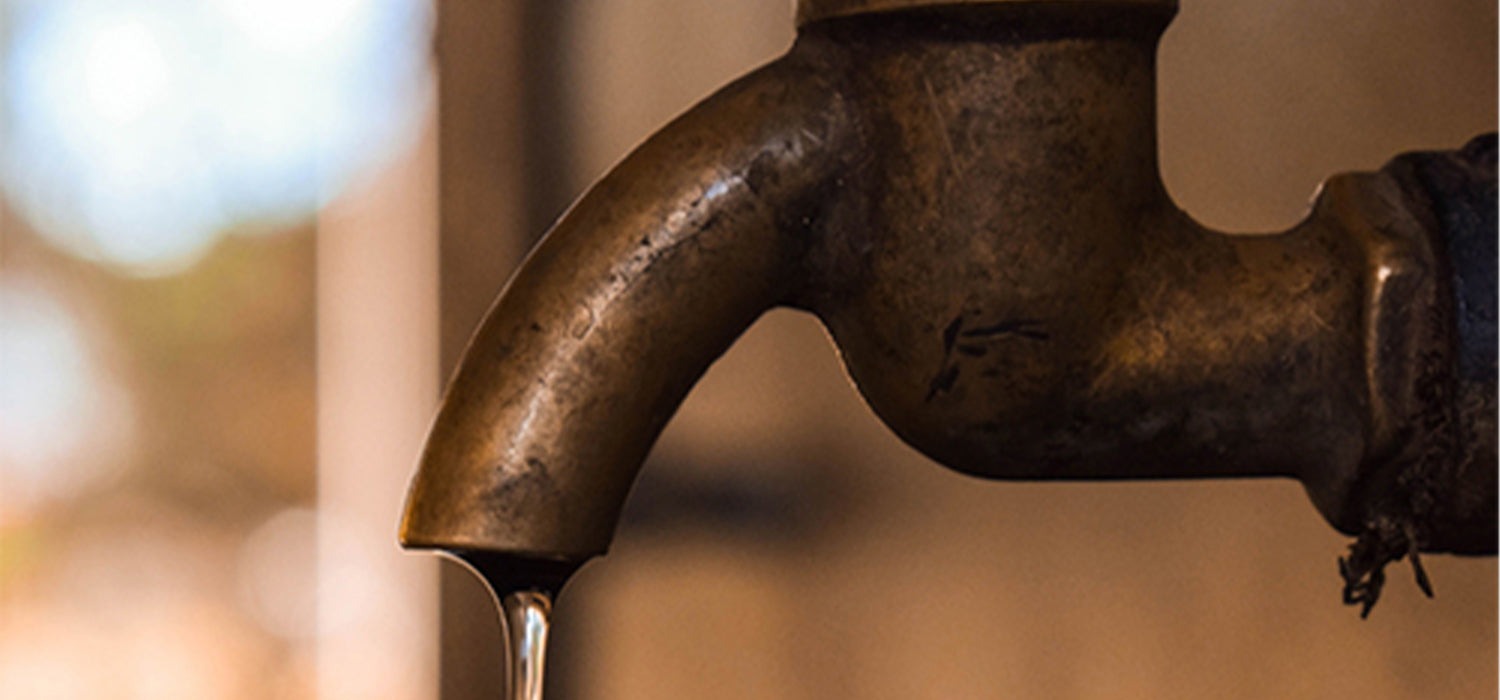
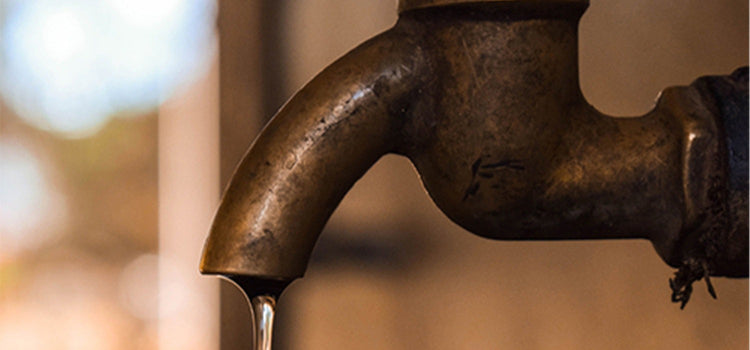
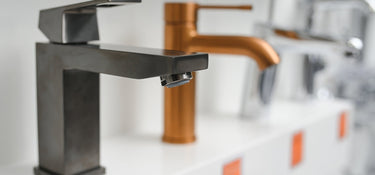
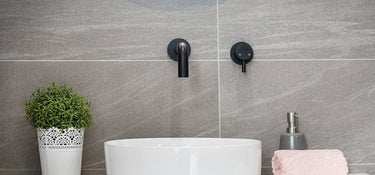
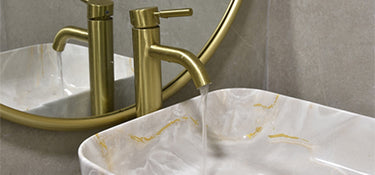
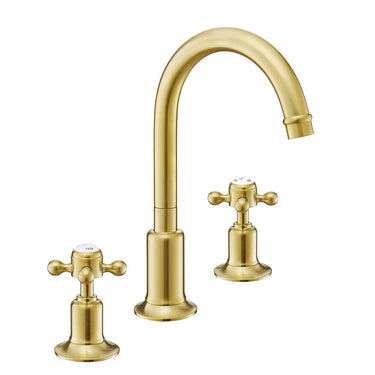
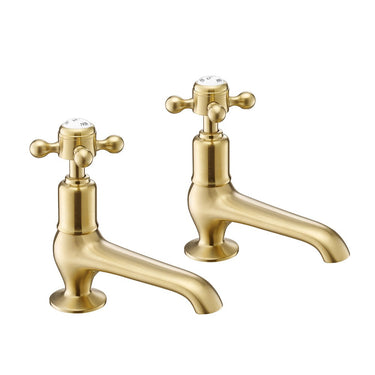

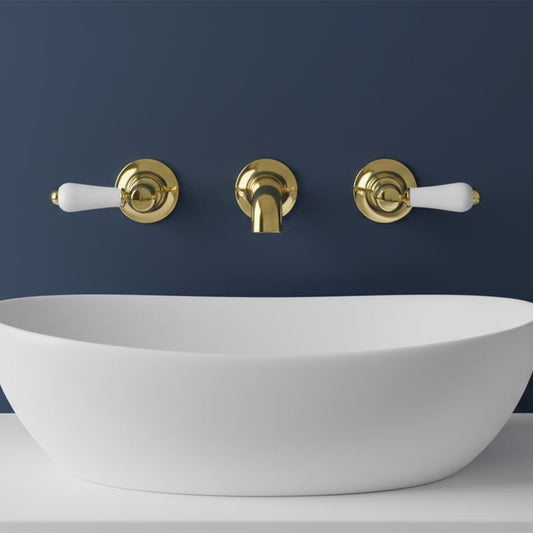

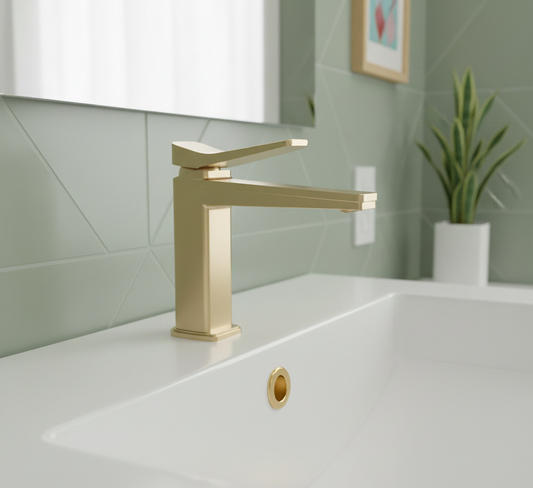

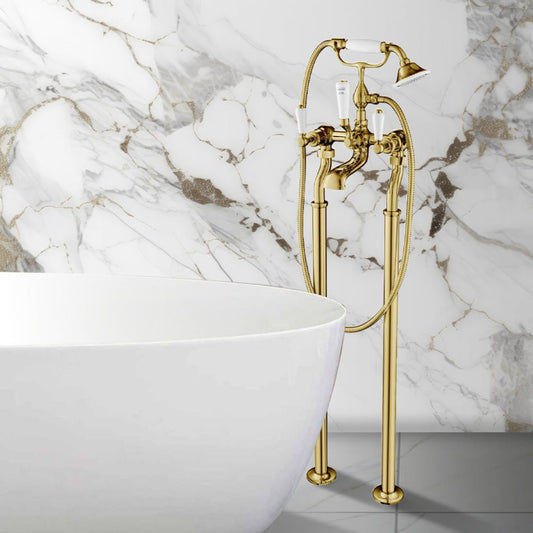
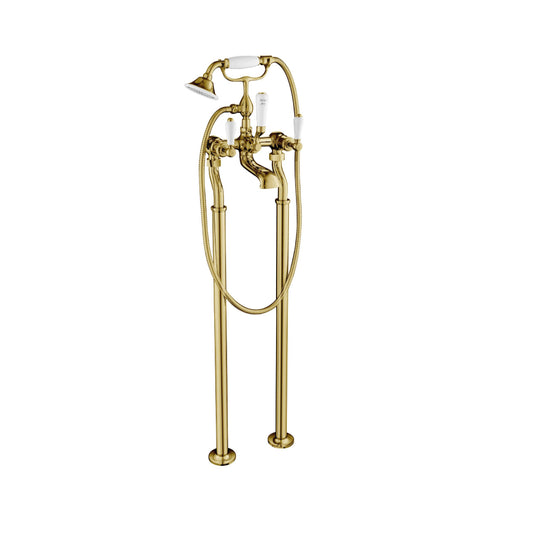
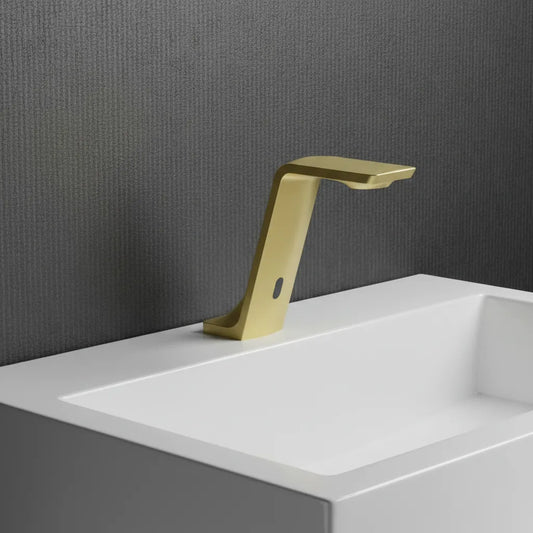

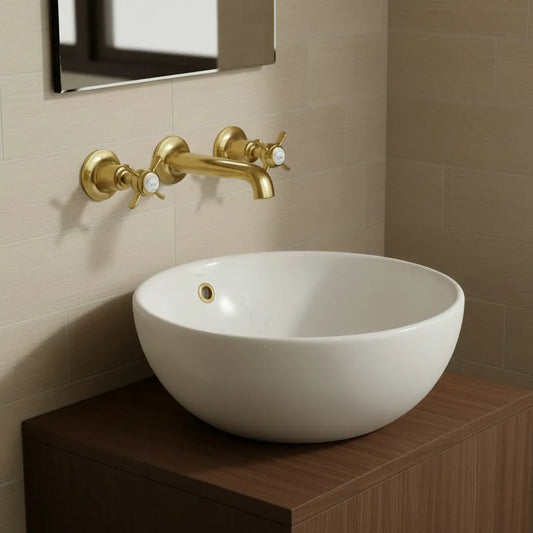


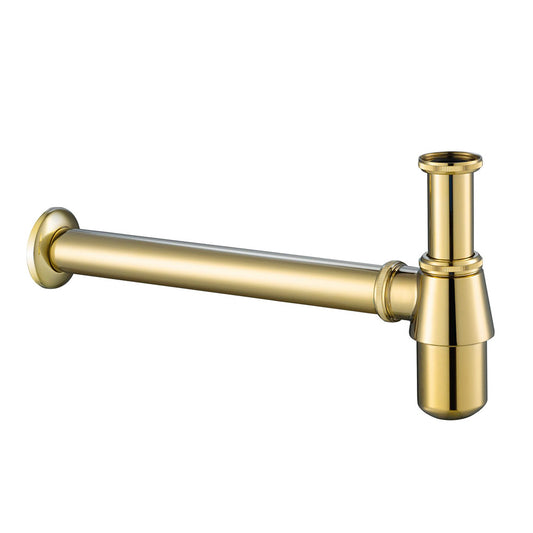
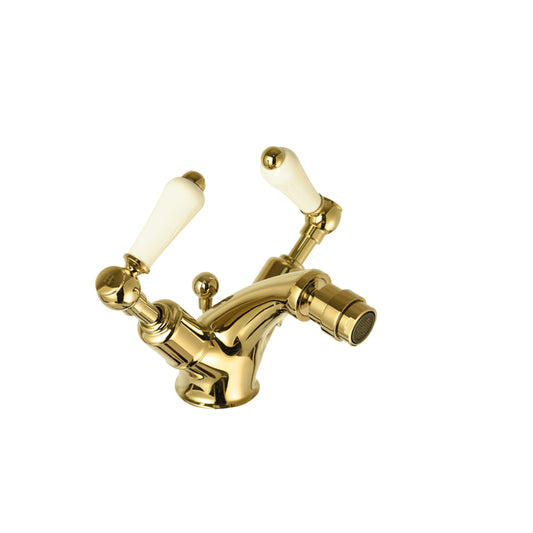

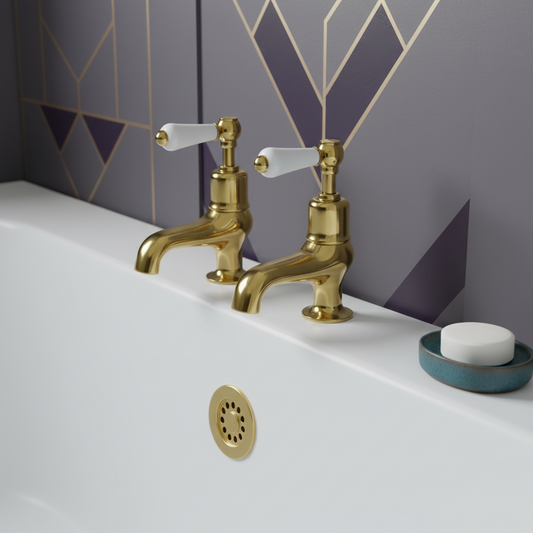

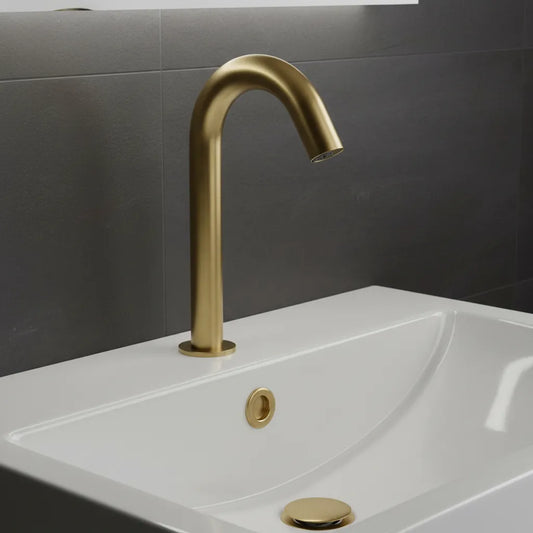


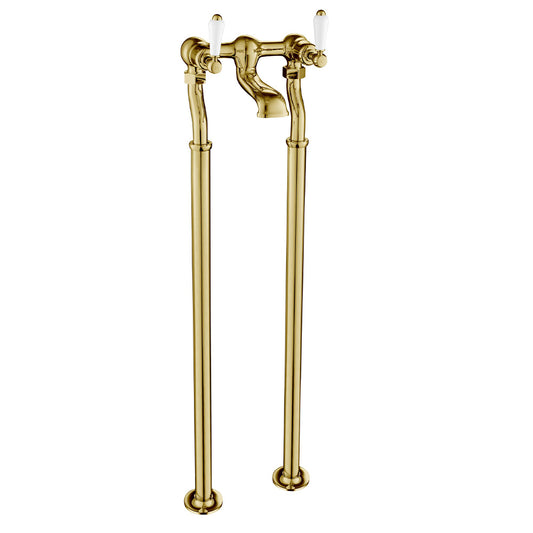
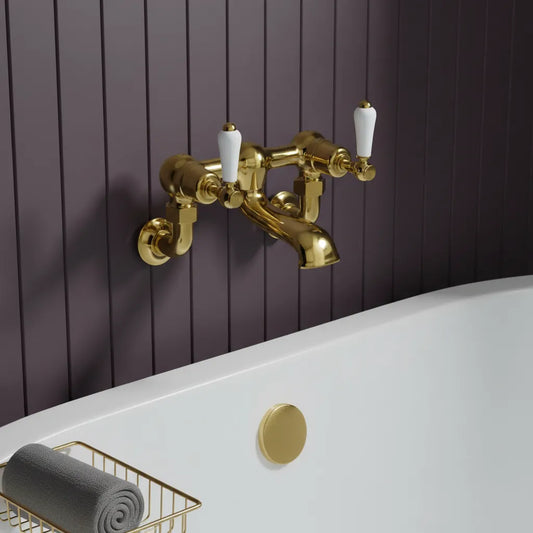

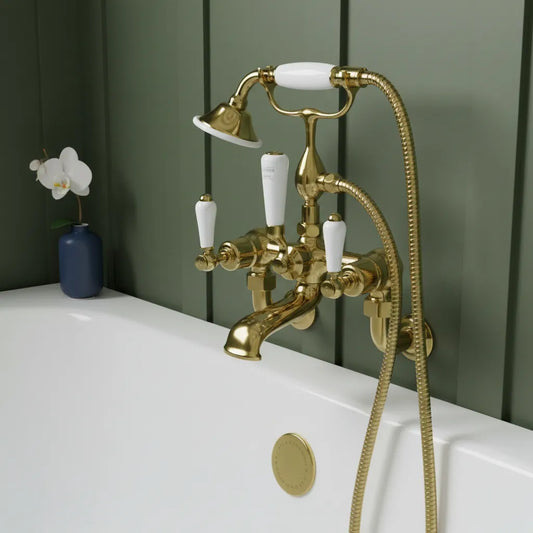



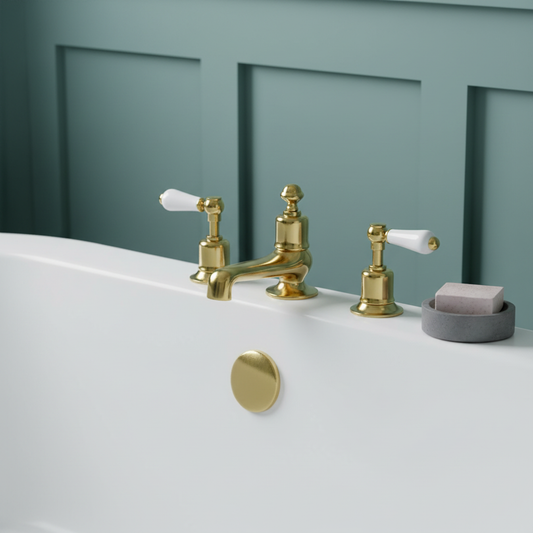

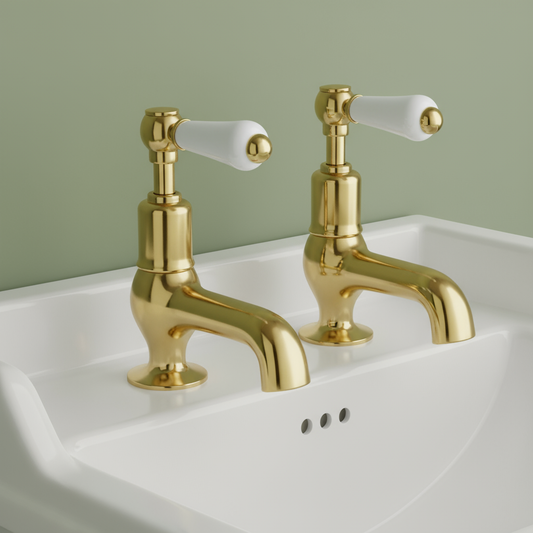





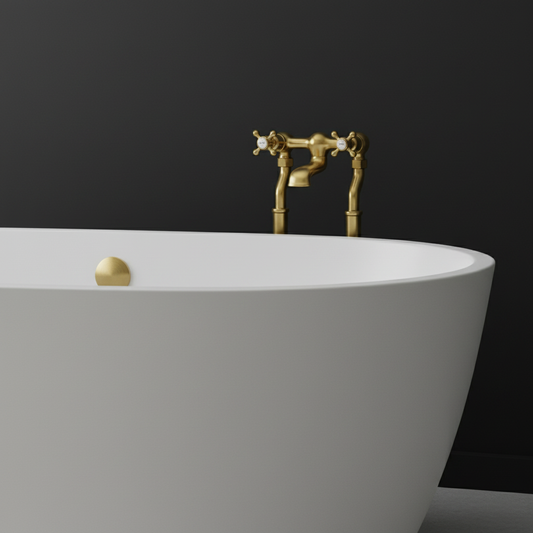



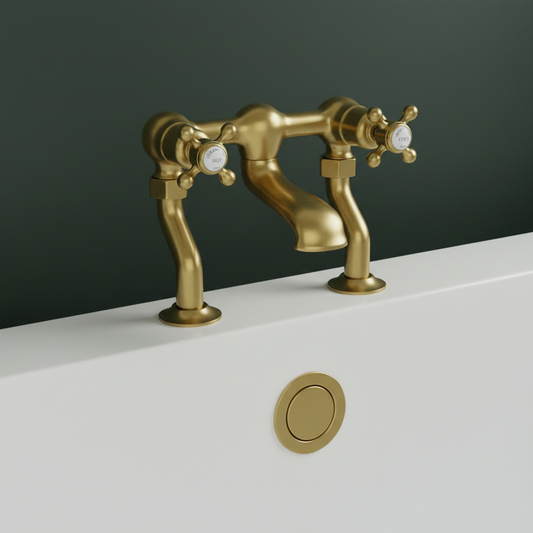

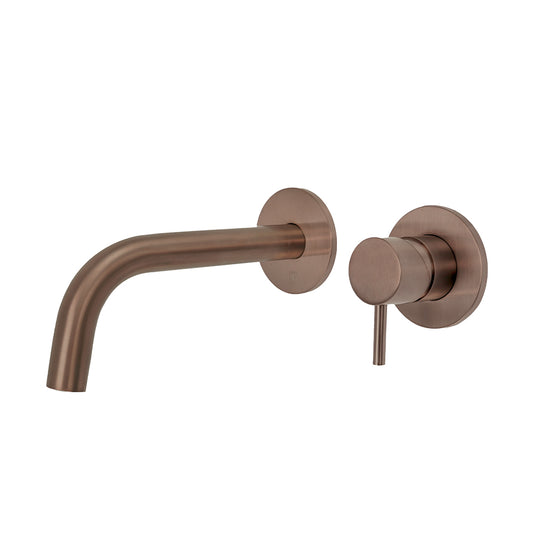
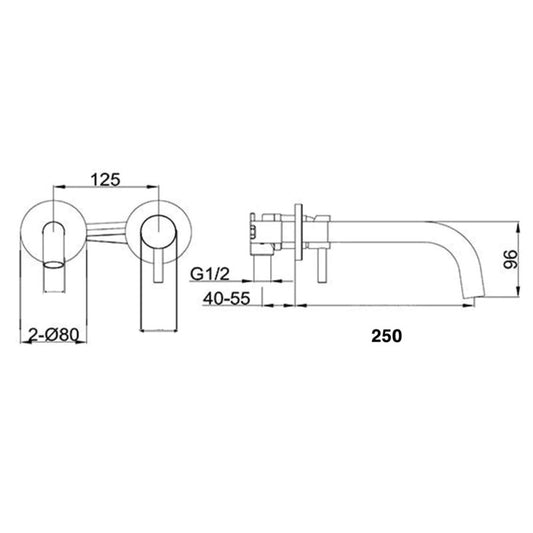
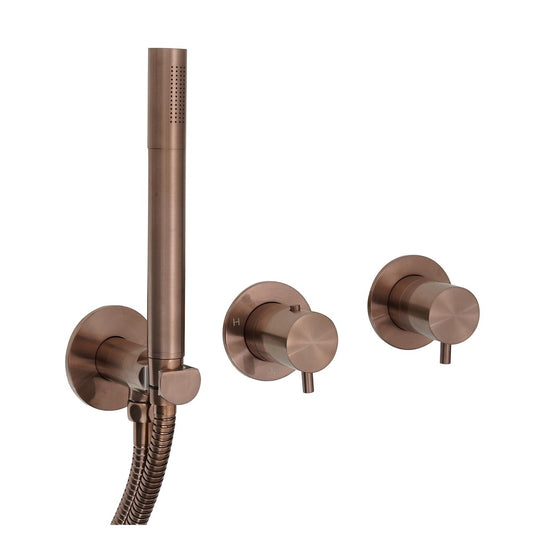
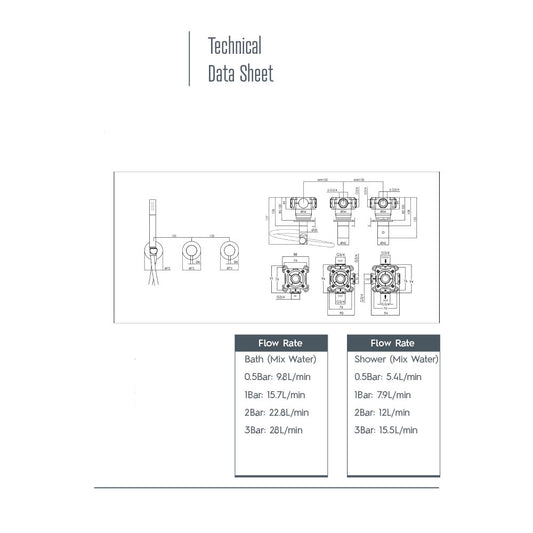
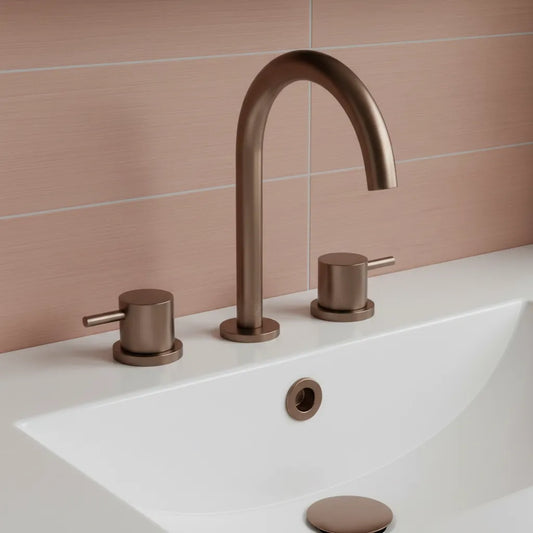

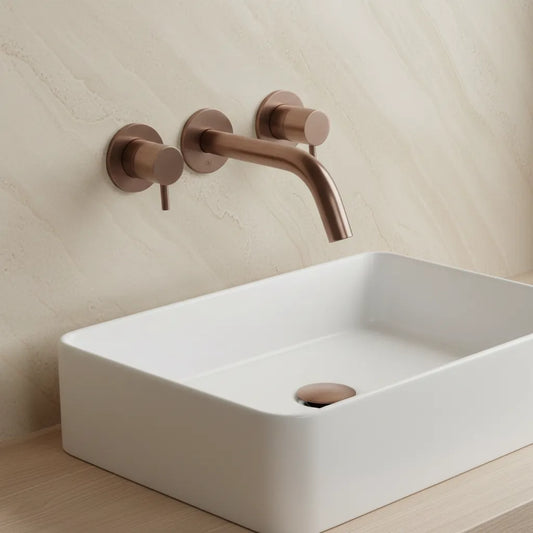

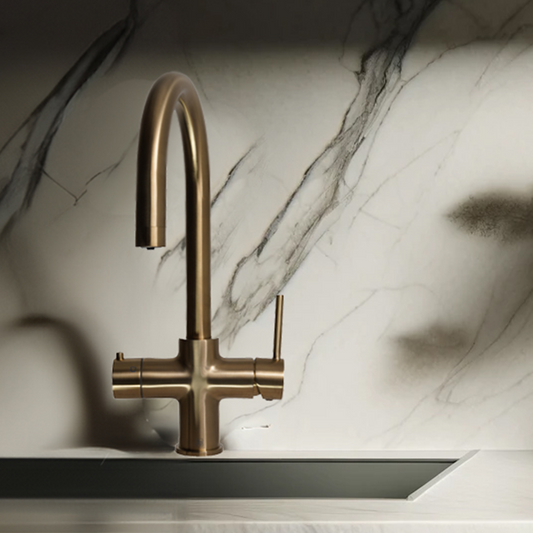

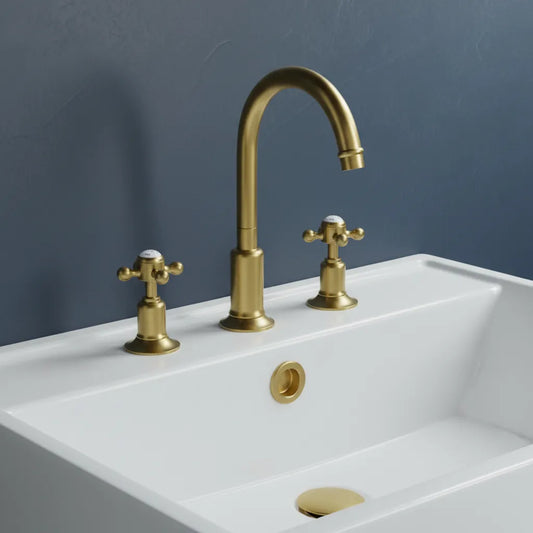

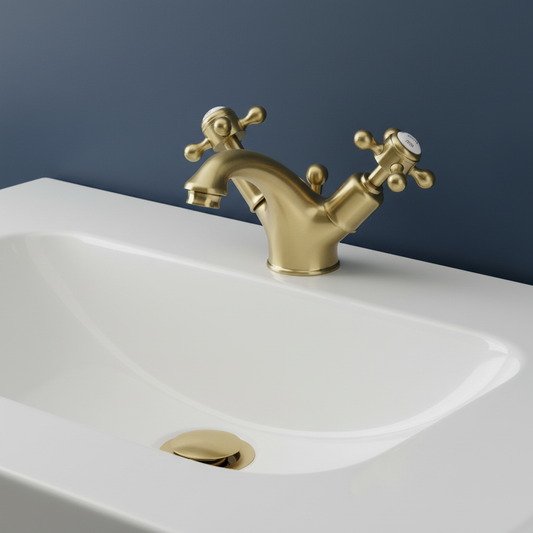

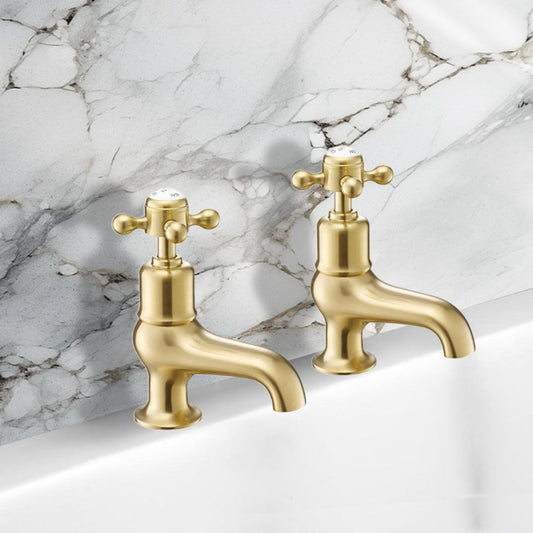
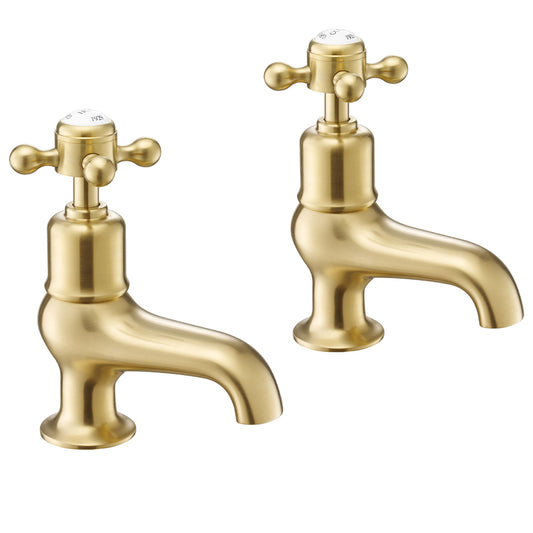


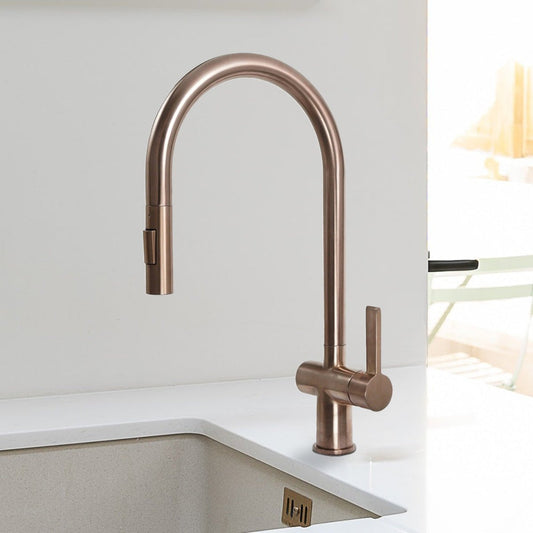
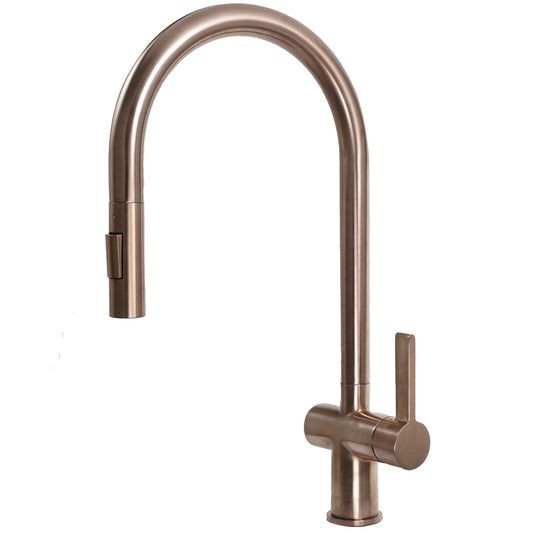


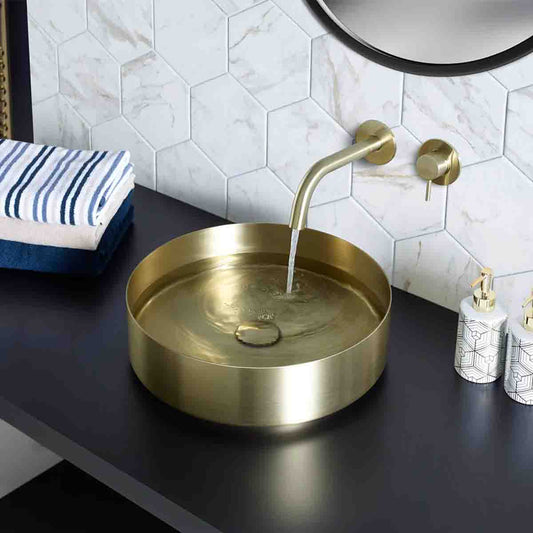
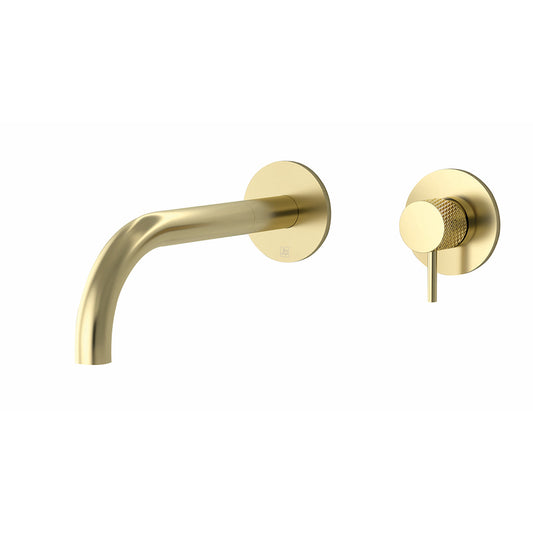

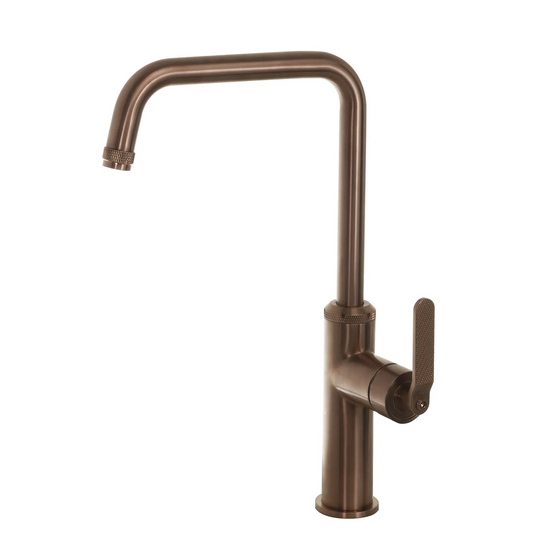


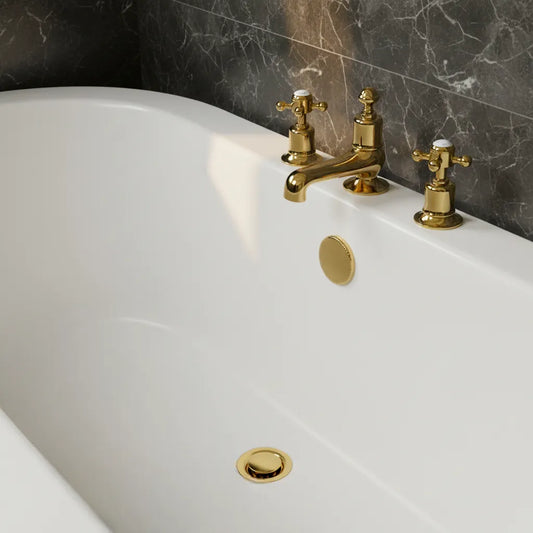



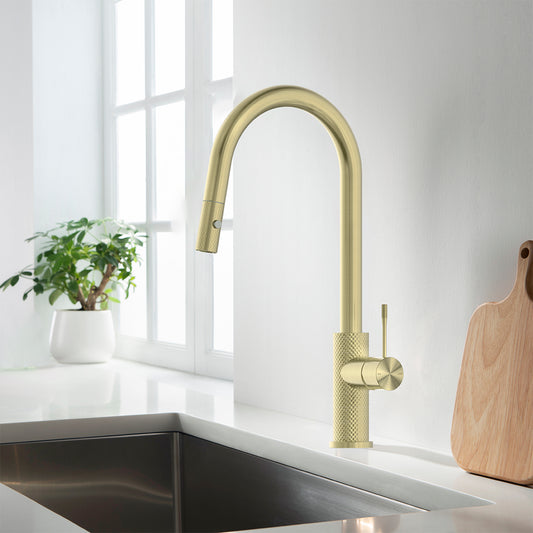
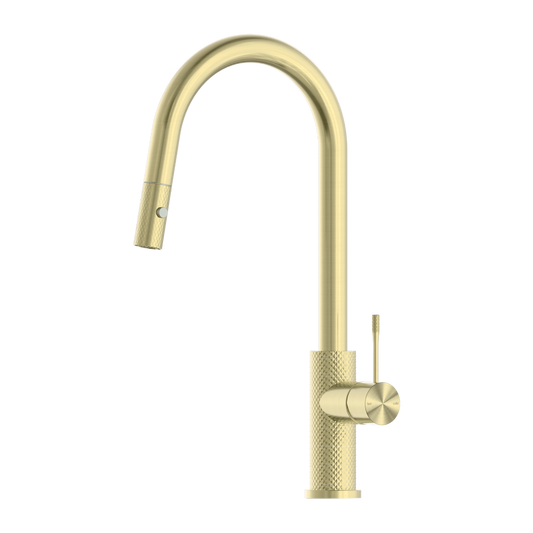
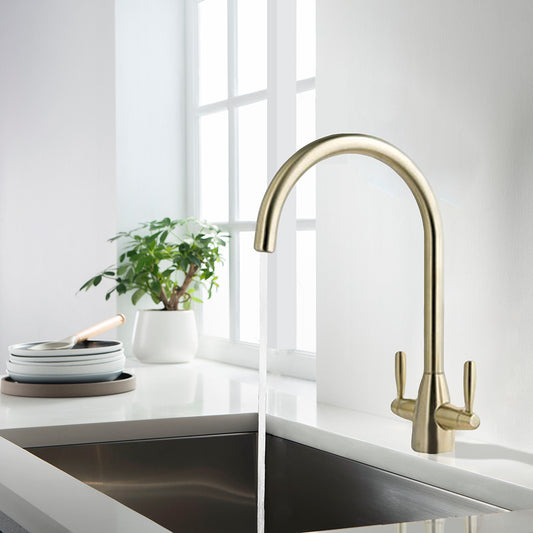


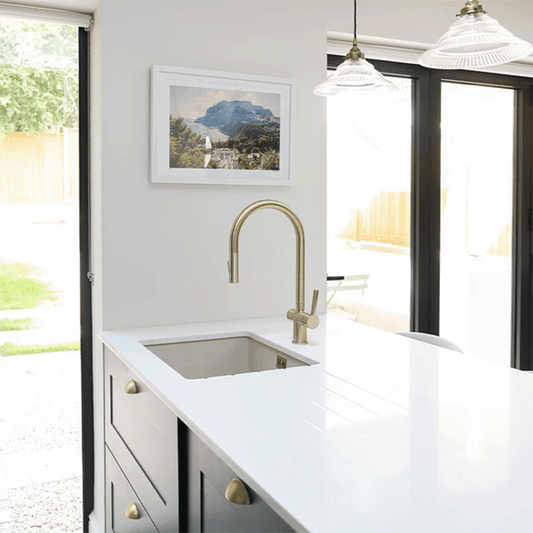
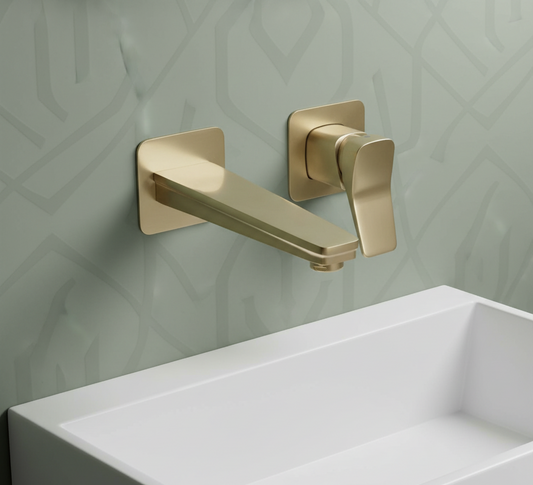

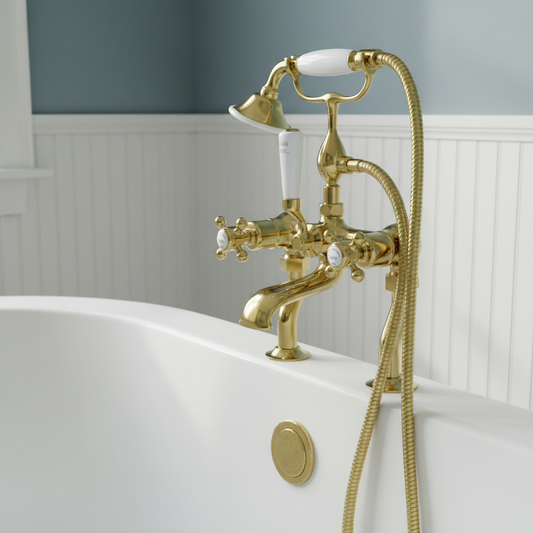

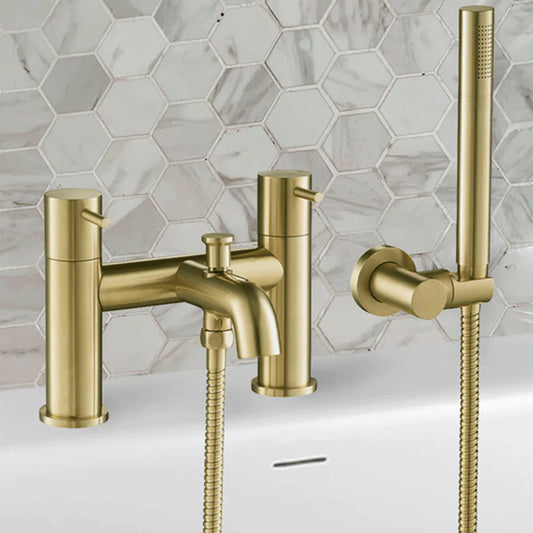
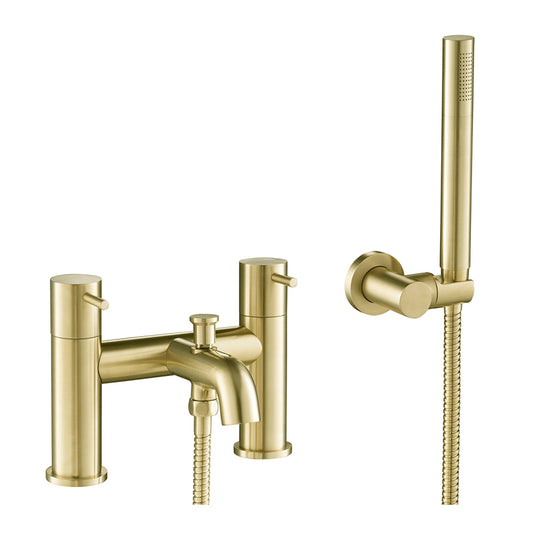
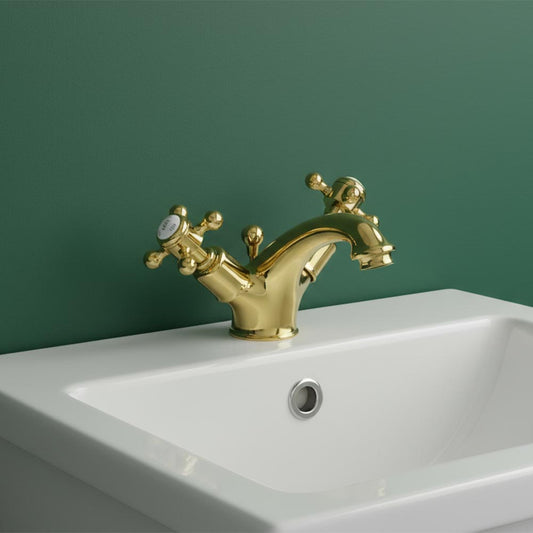

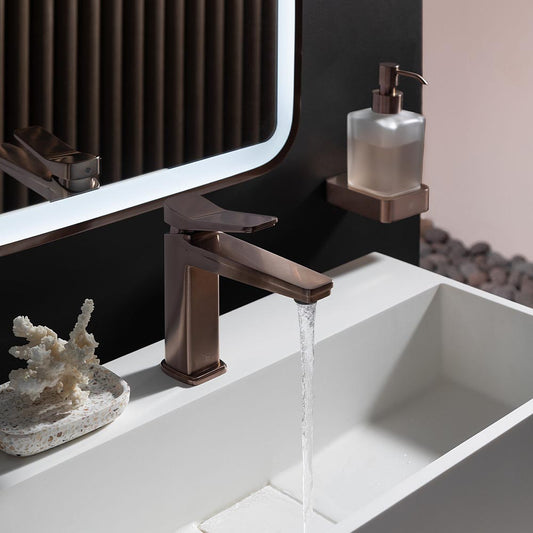

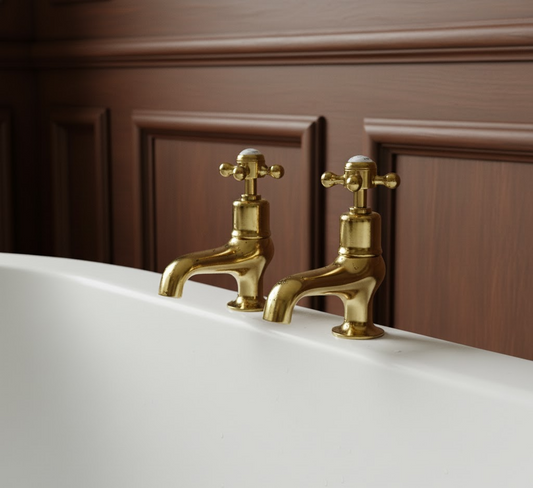

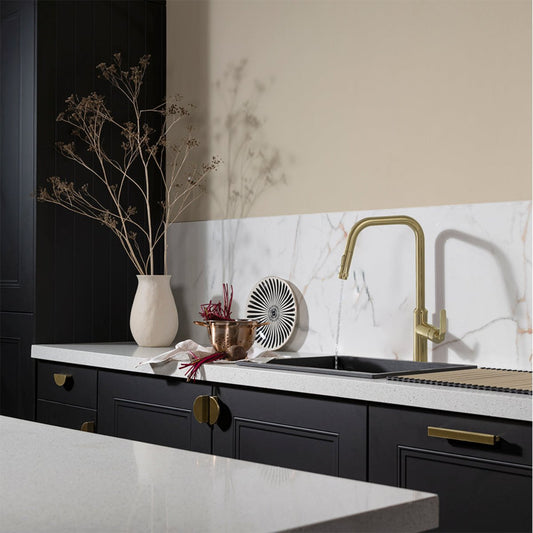
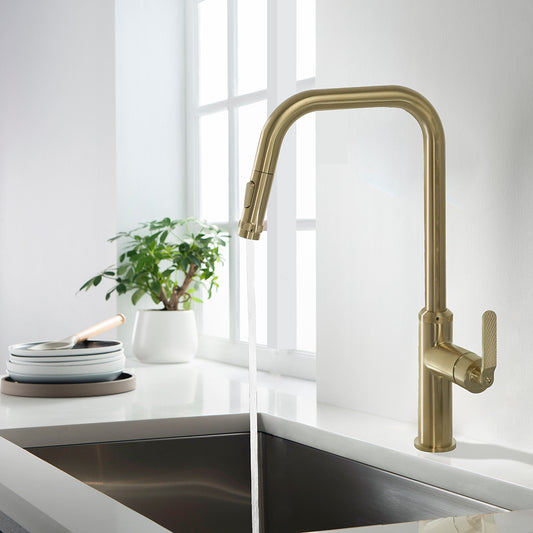
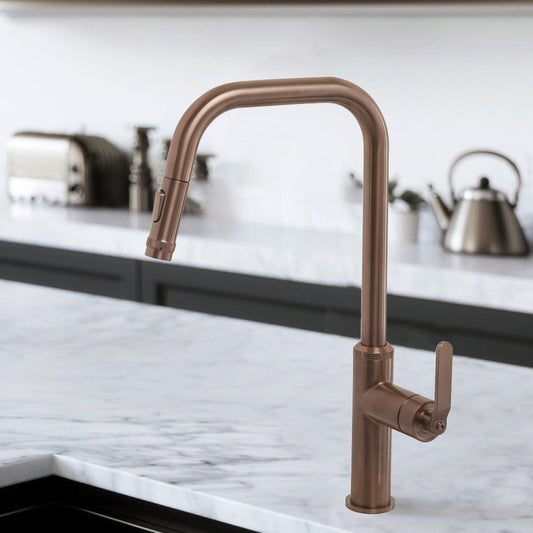

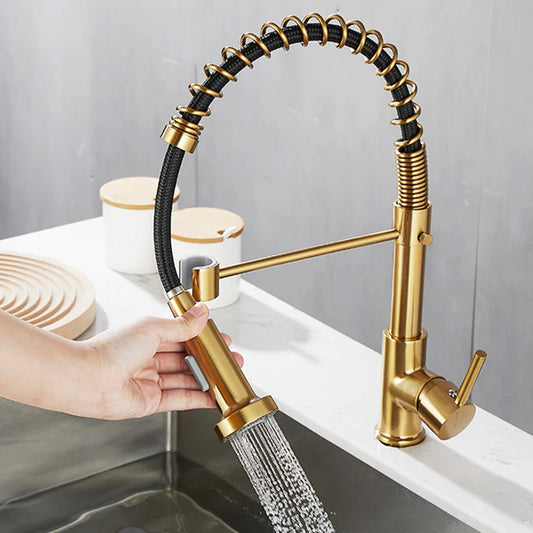

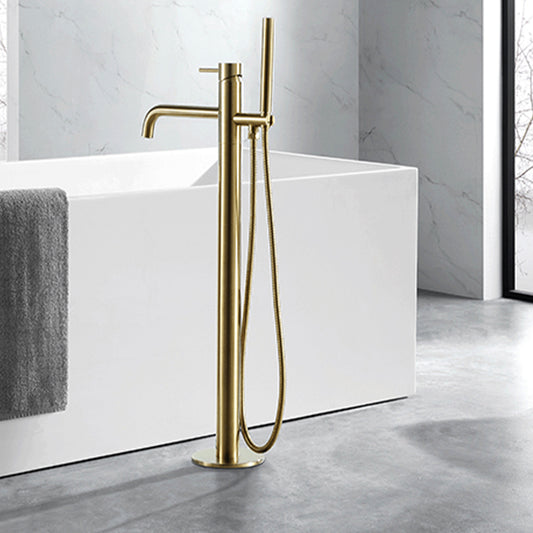
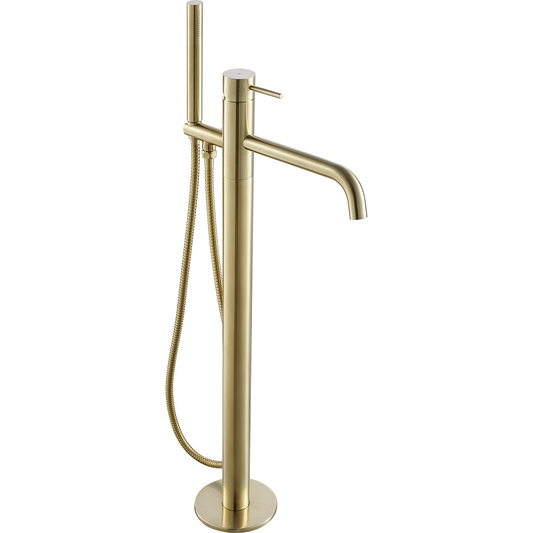
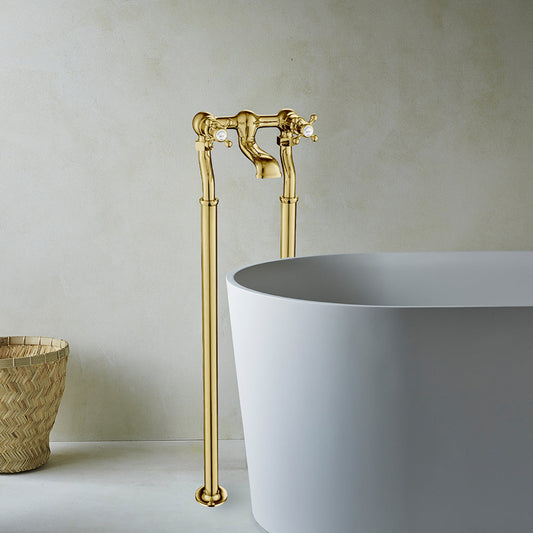
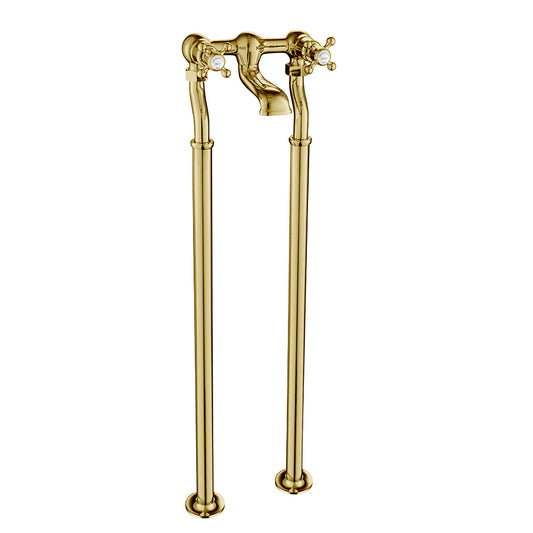
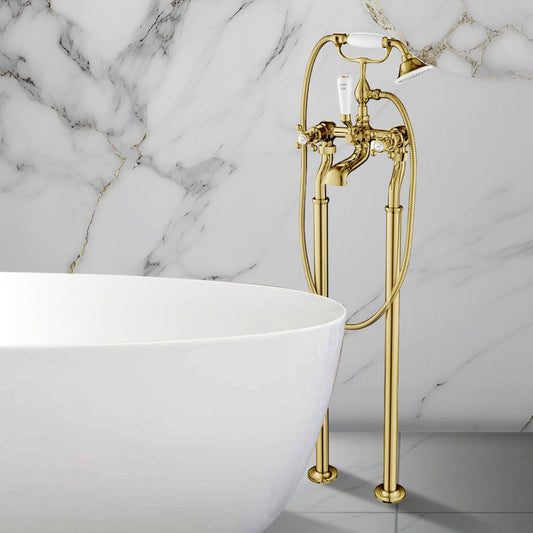
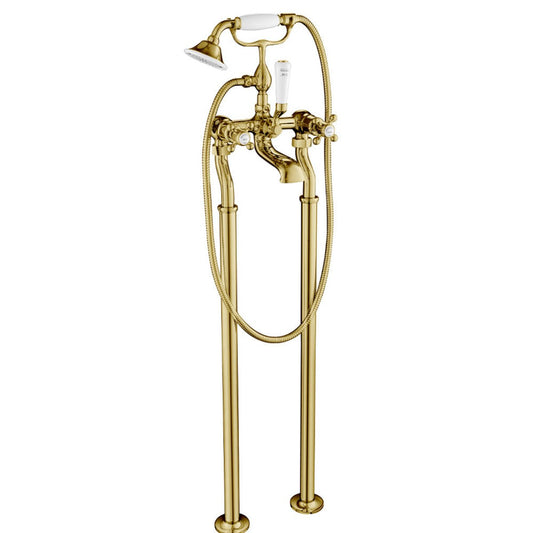
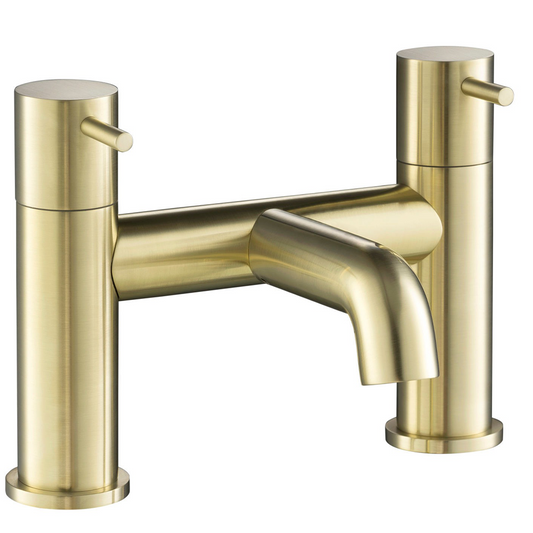
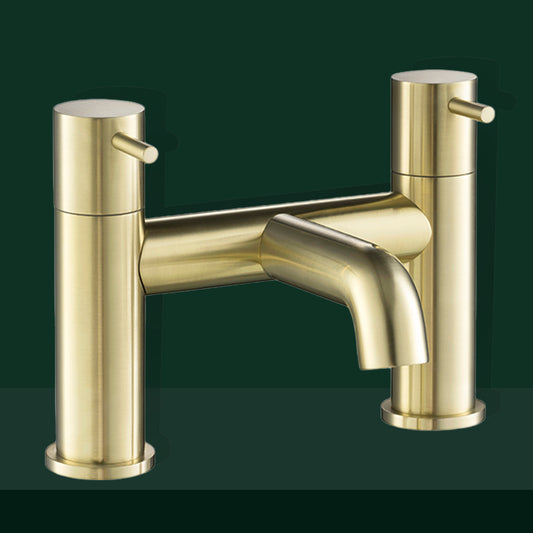
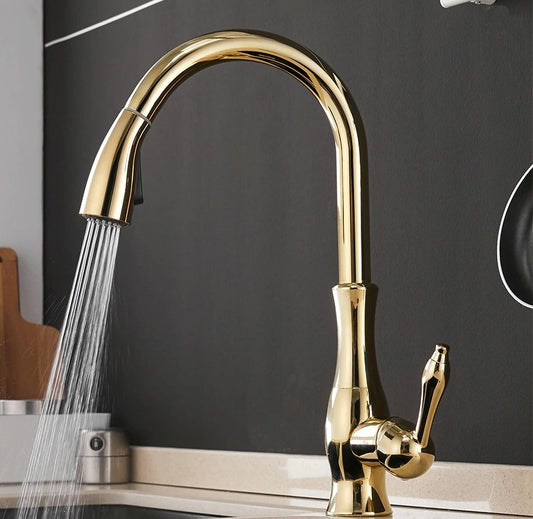
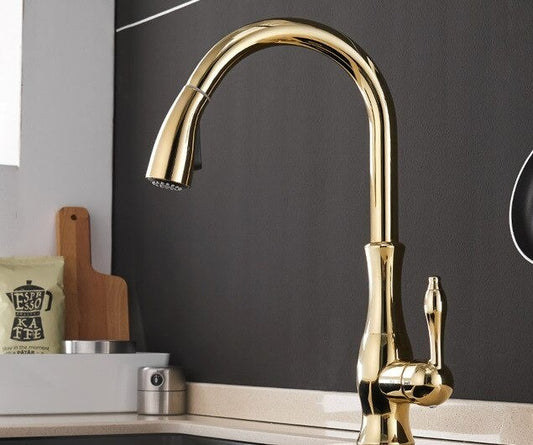
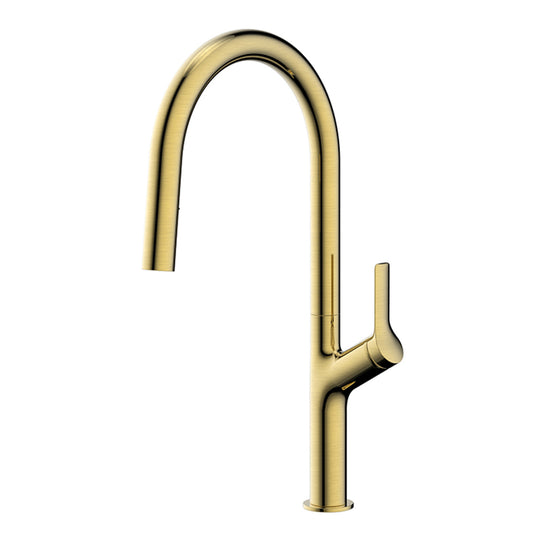
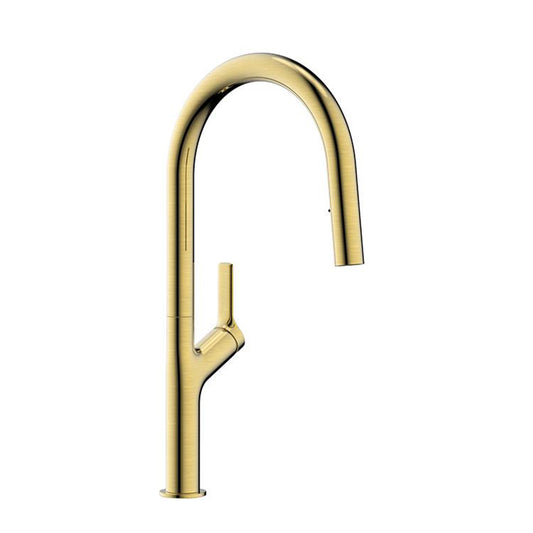
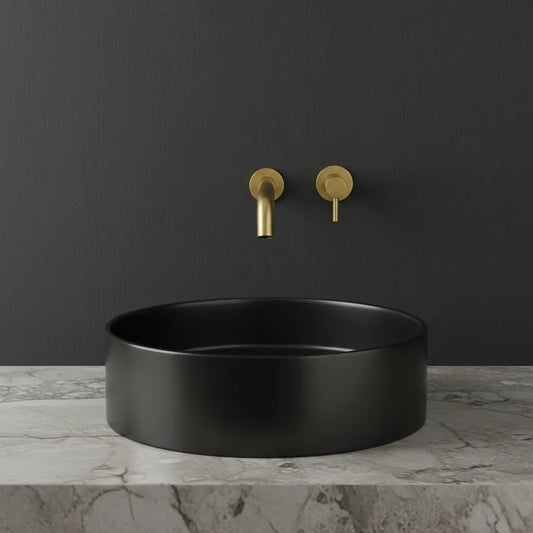




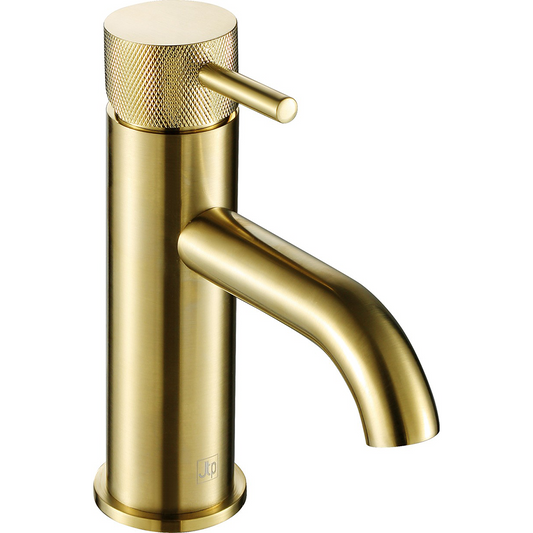






6 Comments
Replacing worn parts using O-rings helps prevent leaks and keep your bathroom safe. This is a great tip.
Instructions for Fixing Taps and tips Choosing the Right Replacements are well explained
“Dripping taps drive me crazy! 😡 Thanks for the step-by-step fix guide, super helpful!”